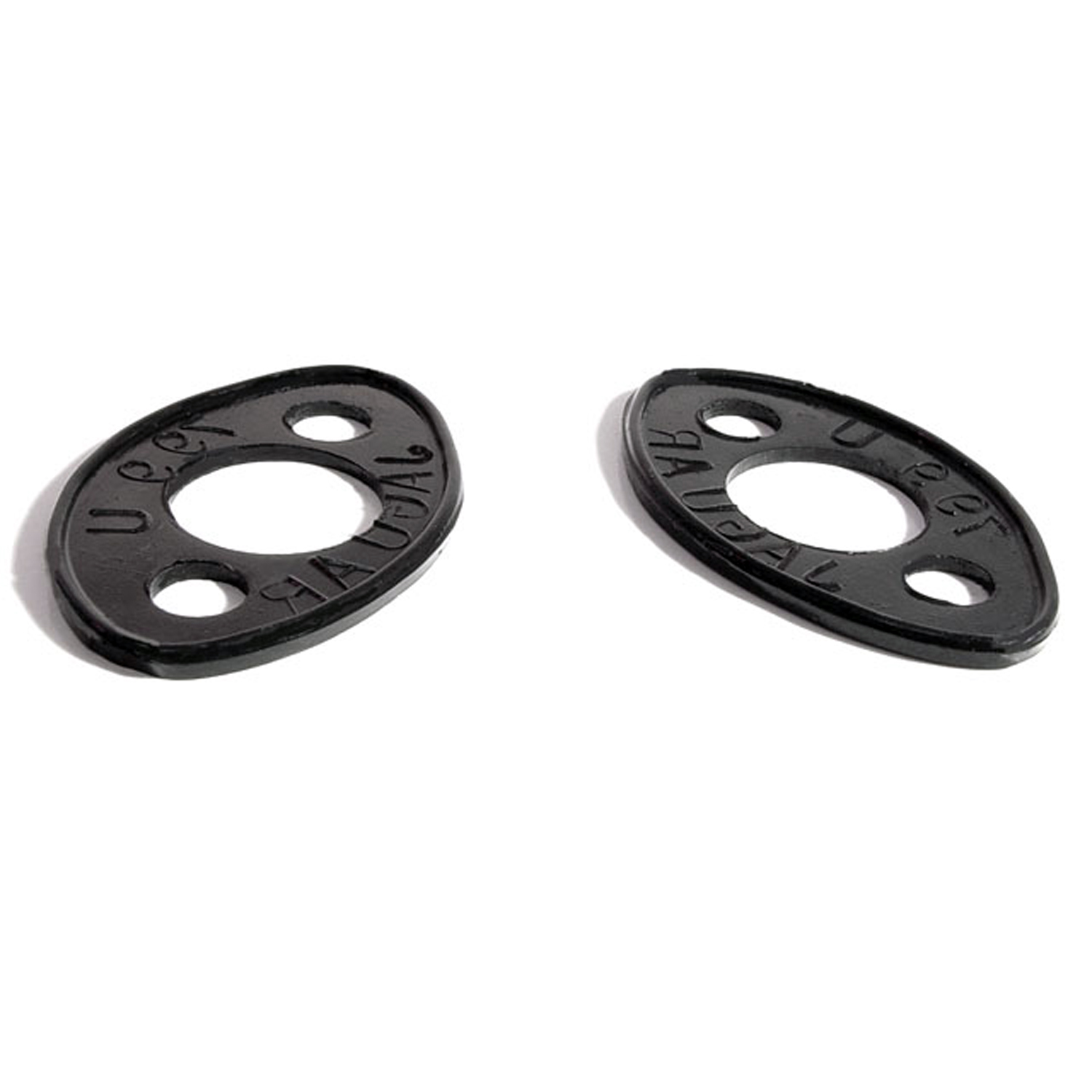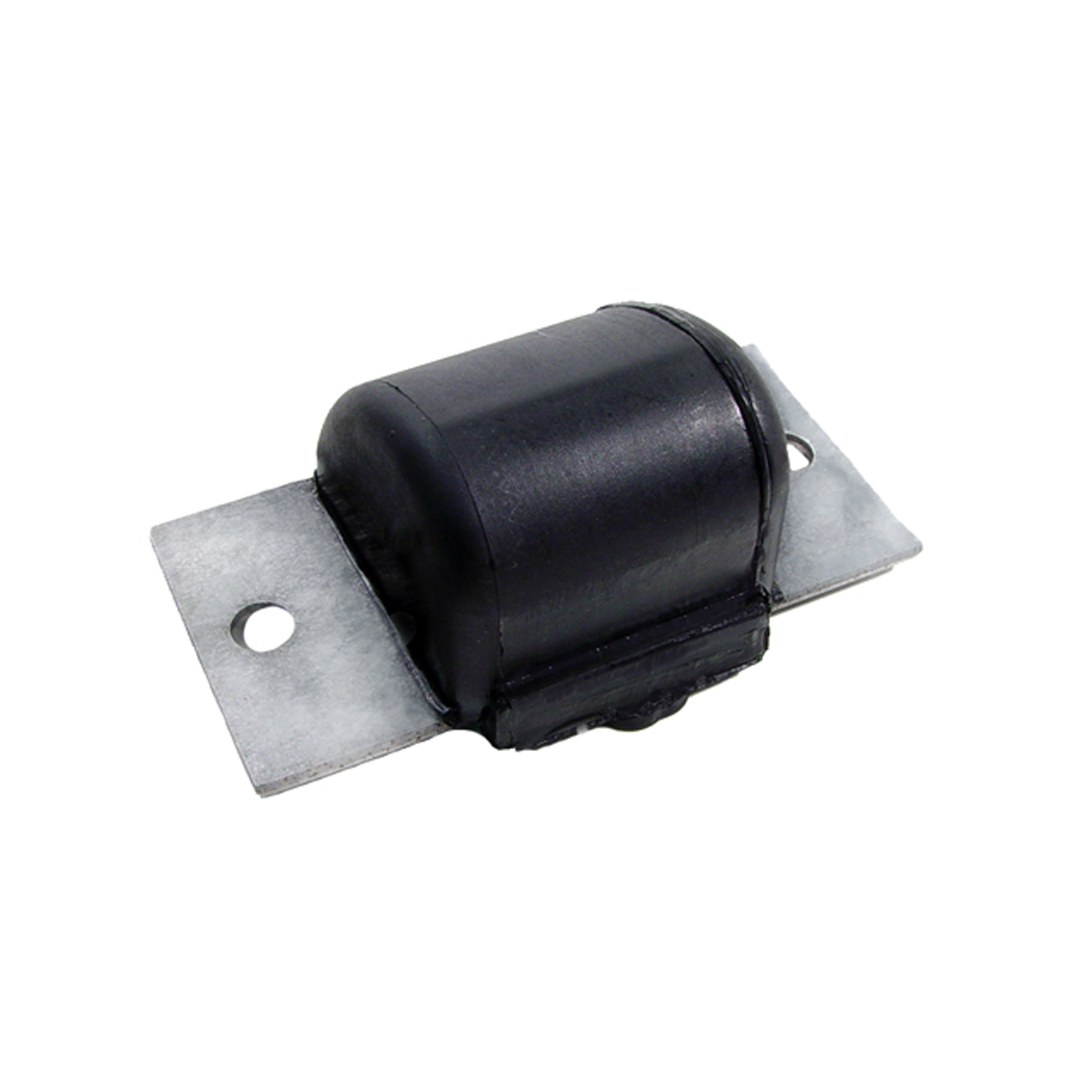Image of 1951 Jaguar Xk120, Note: These illustrations use artistic license and may differ from actual historical models.
Performance Metrics
Fundamental Metrics
Emotional Appeal
MMP Rating
| Engine Specifications | |
|---|---|
| Engine Options: | 3.4L DOHC Inline 6 |
| Displacement Range: | 3442 cc |
| Horsepower Range: | 160-180 hp |
| Torque: | 195 lb-ft |
| Compression Ratio: | 8.0:1 |
| Ignition System: | Twin SU carburetors |
| Cooling System: | Water-cooled |
| Performance Specifications | |
| 0-60 Time: | 10 seconds |
| 1/4 Mile Time: | 17.6 seconds |
| Top Speed: | 120 mph |
| Transmission and Drive | |
| Drive Type: | Rear-wheel drive |
| Transmission Type: | 4-speed manual |
| Fuel and Efficiency | |
| Fuel System Type: | Carburetor |
| MPG: | 18 mpg |
| Dimensions and Brakes | |
| Brakes: | Drum brakes |
| Wheelbase: | 102 inches |
| Weight: | 2905 lbs |
Note: Specifications for classic cars are given to the best of our ability, considering the limited and variant data available.
1951 Jaguar XK120: A Testament to Post-War Automotive Excellence
The 1951 Jaguar XK120 emerged as a beacon of innovation and design, capturing the hearts of car enthusiasts and the public alike. Born from the ashes of World War II, this vehicle represented not just a return to luxury and performance but also an optimistic glimpse into the future of automotive engineering. The XK120 was a product of Jaguar Cars, a British manufacturer known for its dedication to style and speed. At its debut in 1948, it was the fastest production car in the world, a fact that would etch its name into the annals of motoring history.
Design and Innovation
With its sweeping curves and poised stance, the XK120's exterior styling was nothing short of breathtaking. The long bonnet, flowing fenders, and elegant grille were hallmarks of a design that has become iconic. Inside, occupants were greeted with an opulent interior that featured rich leather upholstery and polished wood accents—a testament to the high-quality materials used during its construction.
The XK120 boasted technological advancements that were ahead of its time, including independent torsion bar front suspension and rack-and-pinion steering. Color options ranged from stately silver to a bold British Racing Green, with each hue accentuating the car's graceful lines. Among body styles, the Open Two-Seater (OTS) roadster was particularly revered for its sporty appeal.
Historical Significance
The Jaguar XK120's impact on automotive design was profound. It set a new standard for sports cars with its combination of aesthetics and performance. Its aluminum cylinder head, dual overhead camshaft (DOHC) engine, and twin SU carburetors distinguished it from contemporaries and influenced future generations of sports cars.
Performance and Handling
The heart of the XK120 was its 3.4-liter inline-six engine which propelled it to a top speed of 120 mph—a figure that inspired its name. Acceleration from 0-60 mph was achieved in under 10 seconds, an impressive feat for the era. On the road, the XK120 handled with poise and grace, responding eagerly to driver inputs while providing an exhilarating auditory experience through its sonorous exhaust note.
Ownership Experience
The XK120 found use in various roles from daily driving to racing in prestigious events like Le Mans. Maintenance is typical for a car of its age; while reliability is generally good, access to parts and knowledgeable mechanics is crucial. The ownership experience is often described as rewarding but requires commitment to upkeep.
Fun Facts
Rare editions like the alloy-bodied versions are highly sought after by collectors. Celebrity owners have included Clark Gable and Steve McQueen. The XK120 held numerous speed records including one for sustained speed over long distances. Criticisms were few but included limited cabin space and inadequate weather protection in early models.
Collector's Information
Today, a well-preserved 1951 Jaguar XK120 can fetch anywhere from $100,000 to over $300,000 depending on provenance and condition. Approximately 12,000 units were produced across all variants making them relatively rare but not unattainable for serious collectors. The value trend has been appreciating over time due to their desirability and historical importance.
Conclusion
The 1951 Jaguar XK120 stands as a monument to post-war automotive resurgence—a blend of beauty, power, and innovation that continues to captivate enthusiasts around the world. Its legacy endures not only in design but also in spirit; it represents an era where cars were more than transportation—they were symbols of freedom and joy.
1951 Jaguar Xk120 Catalog of Parts
 1951 Jaguar XK120 Accelerator Pedal Pad. 1-9/16" X 6-3/4", Each-AP 14Accelerator Pedal Pad. 1-9/16" X 6-3/4", Each
1951 Jaguar XK120 Accelerator Pedal Pad. 1-9/16" X 6-3/4", Each-AP 14Accelerator Pedal Pad. 1-9/16" X 6-3/4", Each 1951 Jaguar XK120 Rear Bumper Extension Tube Grommet. 3" O.D., 1-9/16" I.D-BG 105Rear Bumper Extension Tube Grommet. 3" O.D., 1-9/16" I.D. Each
1951 Jaguar XK120 Rear Bumper Extension Tube Grommet. 3" O.D., 1-9/16" I.D-BG 105Rear Bumper Extension Tube Grommet. 3" O.D., 1-9/16" I.D. Each 1951 Jaguar XK120 Upper Ball Joint Tie Rod Boot. 1-1/8" bottom I.D-BN 101Upper Ball Joint Tie Rod Boot. 1-1/8" bottom I.D., 1/2" top I.D. Each
1951 Jaguar XK120 Upper Ball Joint Tie Rod Boot. 1-1/8" bottom I.D-BN 101Upper Ball Joint Tie Rod Boot. 1-1/8" bottom I.D., 1/2" top I.D. Each 1951 Jaguar XK120 Upper and Lower Ball Joint Boot. 5/8" upper I.D-BN 101-AUpper and Lower Ball Joint Boot. 5/8" upper I.D., 1-1/2" bottom I.D., 7/8" high. Each
1951 Jaguar XK120 Upper and Lower Ball Joint Boot. 5/8" upper I.D-BN 101-AUpper and Lower Ball Joint Boot. 5/8" upper I.D., 1-1/2" bottom I.D., 7/8" high. Each 1951 Jaguar XK120 Roll Bar Bushing. 1/2" high, with 1/2" hole. Each-BN 2Roll Bar Bushing. 1/2" high, with 1/2" hole. Each
1951 Jaguar XK120 Roll Bar Bushing. 1/2" high, with 1/2" hole. Each-BN 2Roll Bar Bushing. 1/2" high, with 1/2" hole. Each 1951 Jaguar XK120 Clutch and Brake Pedal Pads. 1-1/2" wide X 5-1/2" long-CB 11Clutch and Brake Pedal Pads. 1-1/2" wide X 5-1/2" long. Pair
1951 Jaguar XK120 Clutch and Brake Pedal Pads. 1-1/2" wide X 5-1/2" long-CB 11Clutch and Brake Pedal Pads. 1-1/2" wide X 5-1/2" long. Pair 1951 Jaguar XK120 Headlight Ring Seal. 8-1/4" O.D., 6-3/4" I.D. Pair-HR 2Headlight Ring Seal. 8-1/4" O.D., 6-3/4" I.D. Pair
1951 Jaguar XK120 Headlight Ring Seal. 8-1/4" O.D., 6-3/4" I.D. Pair-HR 2Headlight Ring Seal. 8-1/4" O.D., 6-3/4" I.D. Pair 1951 Jaguar XK120 Door Side and Trunk Seal. Sponge Rubber. Sold by the foot-LP 40-BDoor Side and Trunk Seal. Sponge Rubber. Sold by the foot
1951 Jaguar XK120 Door Side and Trunk Seal. Sponge Rubber. Sold by the foot-LP 40-BDoor Side and Trunk Seal. Sponge Rubber. Sold by the foot 1951 Jaguar XK120 Tail-light Pads. 4-3/4" wide X 7-1/4" long. Pair R&L-MP 799-CTail-light Pads. 4-3/4" wide X 7-1/4" long. Pair R&L
1951 Jaguar XK120 Tail-light Pads. 4-3/4" wide X 7-1/4" long. Pair R&L-MP 799-CTail-light Pads. 4-3/4" wide X 7-1/4" long. Pair R&L 1951 Jaguar XK120 Trunk Handle Pad. 1-1/2" wide X 2-5/8" long. Each-MP 799-DTrunk Handle Pad. 1-1/2" wide X 2-5/8" long. Each
1951 Jaguar XK120 Trunk Handle Pad. 1-1/2" wide X 2-5/8" long. Each-MP 799-DTrunk Handle Pad. 1-1/2" wide X 2-5/8" long. Each 1951 Jaguar XK120 Bumper Bolt Pad. 1-3/4" O.D. Each-MP 799-KBumper Bolt Pad. 1-3/4" O.D. Each
1951 Jaguar XK120 Bumper Bolt Pad. 1-3/4" O.D. Each-MP 799-KBumper Bolt Pad. 1-3/4" O.D. Each 1951 Jaguar XK120 Windshield Post Pad. 2-7/8" long. Each-MP 799-OWindshield Post Pad. 2-7/8" long. Each
1951 Jaguar XK120 Windshield Post Pad. 2-7/8" long. Each-MP 799-OWindshield Post Pad. 2-7/8" long. Each 1951 Jaguar XK120 Park Light Pads. 2" wide X 9-3/8" long. Pair-MP 799-PPark Light Pads. 2" wide X 9-3/8" long. Pair
1951 Jaguar XK120 Park Light Pads. 2" wide X 9-3/8" long. Pair-MP 799-PPark Light Pads. 2" wide X 9-3/8" long. Pair 1951 Jaguar XK120 Door Handle Pads. For Fixed-Head Coupe-MP 799-UDoor Handle Pads. For Fixed-Head Coupe. 1-3/8" wide X 2-1/8" long. Pair
1951 Jaguar XK120 Door Handle Pads. For Fixed-Head Coupe-MP 799-UDoor Handle Pads. For Fixed-Head Coupe. 1-3/8" wide X 2-1/8" long. Pair 1951 Jaguar XK120 Spark plug wire boot. Exclusive Metro part-RP 1-KSpark plug wire boot. Exclusive Metro part. Fits on the distributor cap end. Note: looks similar to coil boot, but is physically smaller. Replaces OEM# CO 2609. Each.
1951 Jaguar XK120 Spark plug wire boot. Exclusive Metro part-RP 1-KSpark plug wire boot. Exclusive Metro part. Fits on the distributor cap end. Note: looks similar to coil boot, but is physically smaller. Replaces OEM# CO 2609. Each. 1951 Jaguar XK120 Jack Holder. Used to keep jack from rattling-RP 90-AJack Holder. Used to keep jack from rattling. Fits 1-1/2" hole. 1-1/4" I.D. Each
1951 Jaguar XK120 Jack Holder. Used to keep jack from rattling-RP 90-AJack Holder. Used to keep jack from rattling. Fits 1-1/2" hole. 1-1/4" I.D. Each 1951 Jaguar XK120 Spark Plug Wire Holder Insulation. Each-SM 30-JSpark Plug Wire Holder Insulation. Each
1951 Jaguar XK120 Spark Plug Wire Holder Insulation. Each-SM 30-JSpark Plug Wire Holder Insulation. Each 1951 Jaguar XK120 Rear Axle Bumper. 4-1/2" long, 1-1/2" wide, 2" high. Each-XB 21-ARear Axle Bumper. 4-1/2" long, 1-1/2" wide, 2" high. Each
1951 Jaguar XK120 Rear Axle Bumper. 4-1/2" long, 1-1/2" wide, 2" high. Each-XB 21-ARear Axle Bumper. 4-1/2" long, 1-1/2" wide, 2" high. Each 1951 Jaguar XK120 Front Suspension Bumper-XB 21-BFront Suspension Bumper. Overall length is 3-1/4" X 1-1/2" wide. Each
1951 Jaguar XK120 Front Suspension Bumper-XB 21-BFront Suspension Bumper. Overall length is 3-1/4" X 1-1/2" wide. EachWhy Choose Metro?
For over 100 years, Metro Moulded Parts has been the pinnacle of quality in classic car restoration parts. Our commitment to precision and authenticity in every component ensures a perfect fit and an OEM-level appearance.
- Expert Craftsmanship & Quality: Each part is a testament to our dedication to reliability and perfection, crafted from original designs and thoroughly tested.
- Advanced Technology: We use cutting-edge techniques to create flawless, long-lasting parts that surpass others in performance.
- SuperSoft Sponge – The Ultimate Door Seal: Not only are our door seals 30% softer than competitors', but they're also guaranteed to never leak. They effectively reduce wind and road noise, enhancing your classic car's comfort and driving experience.
- Proudly American: Our parts are a product of American craftsmanship, made in the USA with a spirit of excellence and heritage.
- Unrivaled Warranty: We back our products with a 30-year industry-leading warranty, a testament to our confidence in their quality.
Join us in preserving the legacy of classic cars with parts that are crafted for perfection, not just made.

